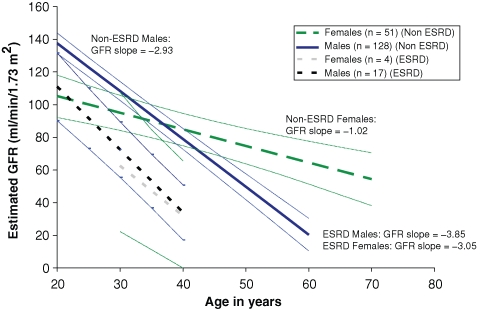Fig. 1.
eGFR regression slopes with 95% CI for male and female patients who progressed to ESRD during the observation period, compared to those who did not progress to ESRD, based on medical record review. ESRD was defined by institution of renal replacement therapy (dialysis or transplant) or achieving a serum creatinine >6 mg/dl. The eGFR (ml/min/1.73 m2) and progression rates (ml/min/1.73 m2/year) were averaged for all patients who had at least three serum creatinine determinations available from the medical record review. Modelling lines for patients who progressed to ESRD were extended back to start at the minimum age for baseline eGFR, i.e. ∼20 years for males and ∼30 years for females (see Table 5). The lines end on average at about the age of ESRD for these patients, i.e. ∼40 years. Modelling lines for patients without ESRD were extended to cover the ages where the data ended, i.e. ∼70 years for some females and ∼60 years for some males.

